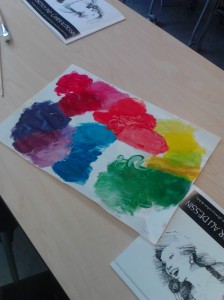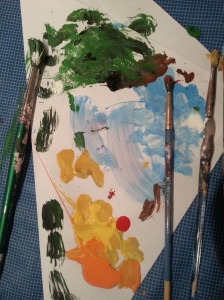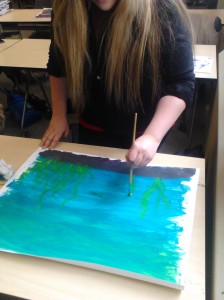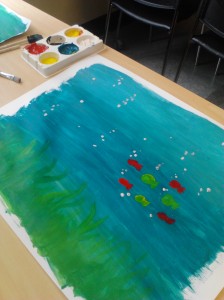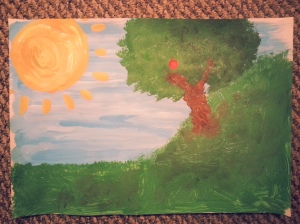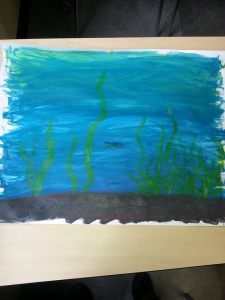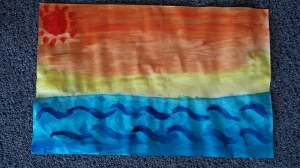Paintings of landscapes can capture all the beautiful colors of our daily lives. It is also a great way to experiment with different color paints. Color is a very complex art element. It consists of primary, secondary, and also intermediate colors. There are different hues, values, intensity’s, tints, and shades. Confused yet? Here is a quick breakdown of the different color properties.
Now that we understand the terminology, let’s take a look at the process. I could not wait to get my fingers into the paint! Not only is it a great sensory activity, but also a fun way to experiment with colours and their properties.
I experimented with different hues, tints and shades. I added white where I wanted to lighten the value of colors, and added black where I wanted to darken it to create different shades. I also experimented with creating color gradients and complementary colors such as green and red.
Alfia’s colour palate shows us the colours she mixed together to create the desired tints and shades she wanted. She discovered that it takes a lot of white to lighten the value of blue, but only a little amount of black to darken the value of green.
Lauren decided to mix her colours directly onto her landscapes. Applying the colour straight to your art piece is a great technique and helps to blend your hues together.
Here are the finished products:
The actual process of creating the landscapes is important. It took a while for me to get use to the blending and creating the gradients. The great thing about paint is you can always change the value by adding different hues to it. There are also a million different values and intensity’s you can create, the possibilities are endless! The finished product merely reflects all the mixing and strokes you experimented with in order to create your piece of art.
There are countless activities you can adapt to a child’s lesson to teach them about colour theory. Finger painting is a great starting place, but colour can be applied to anything! The Imagination Tree gives you 20 great and simple activities to do with young children to teach them about colour and colour properties. The possibilities are endless.
-Zoe
